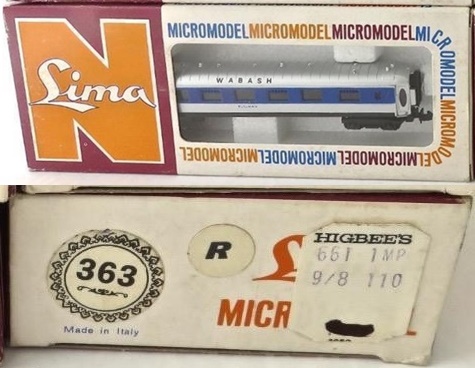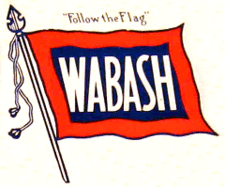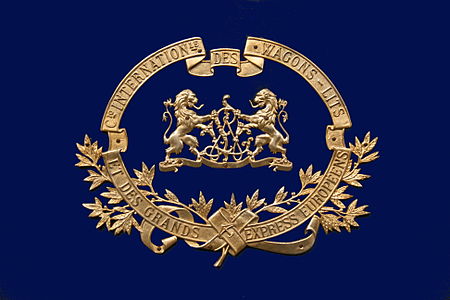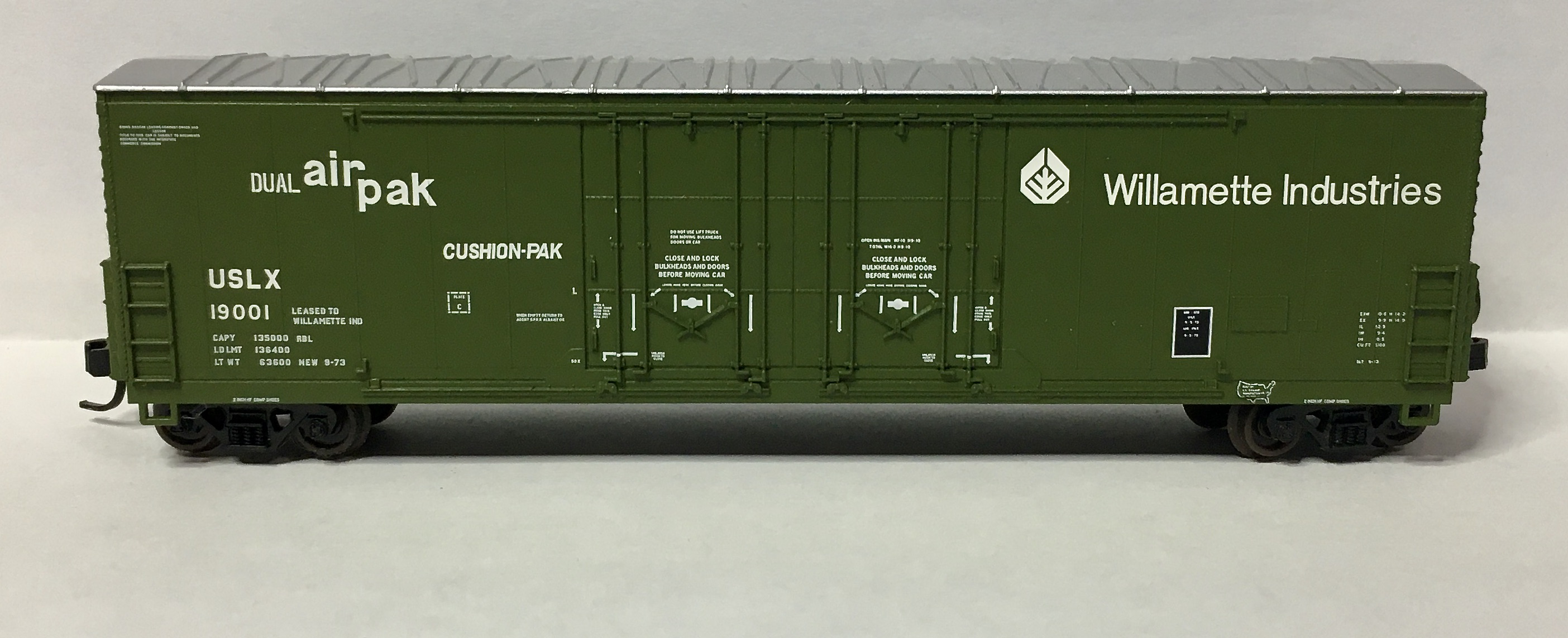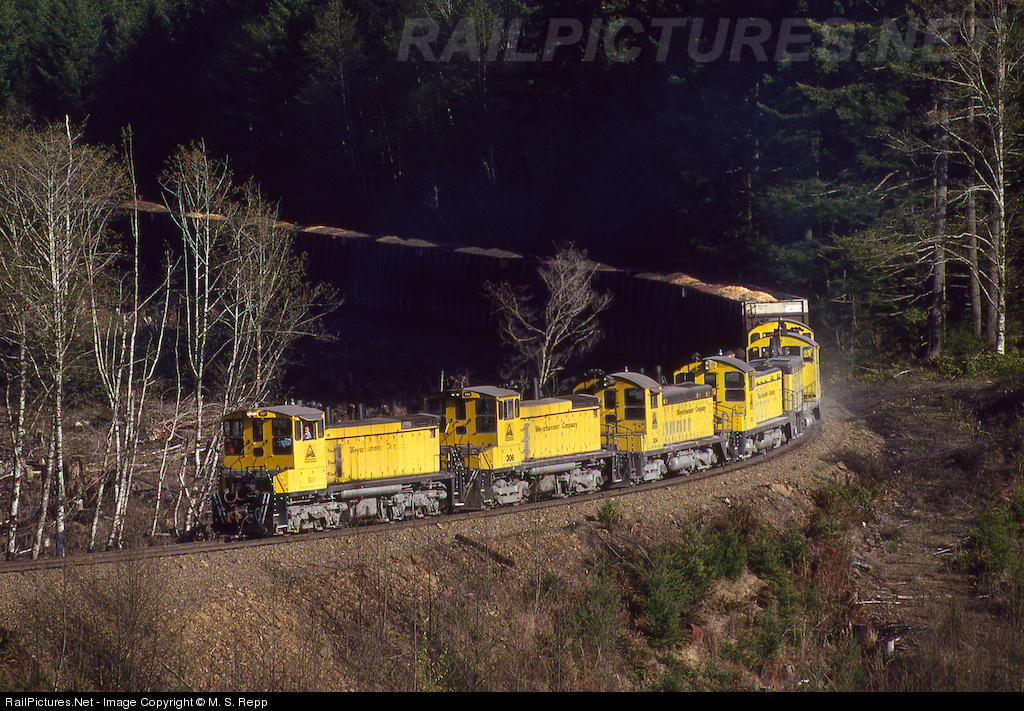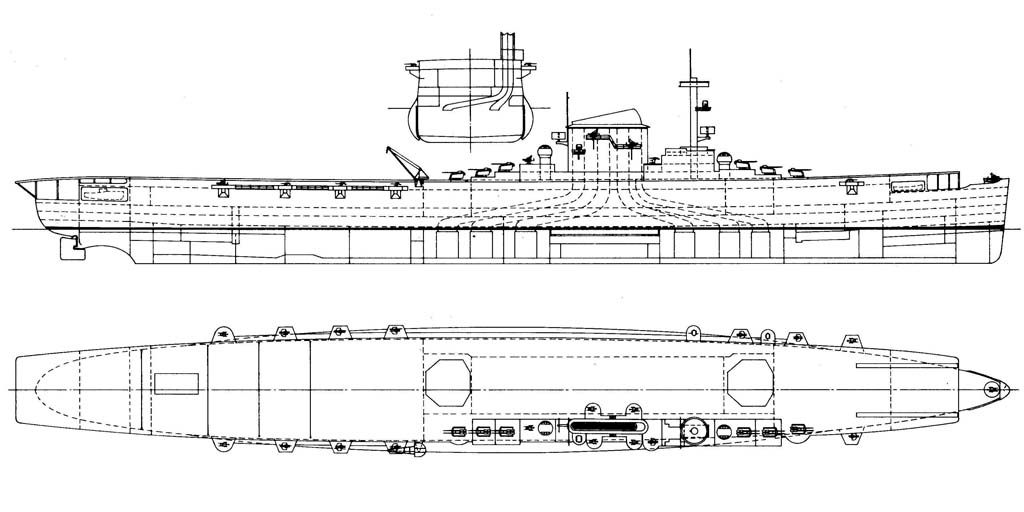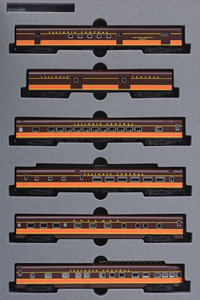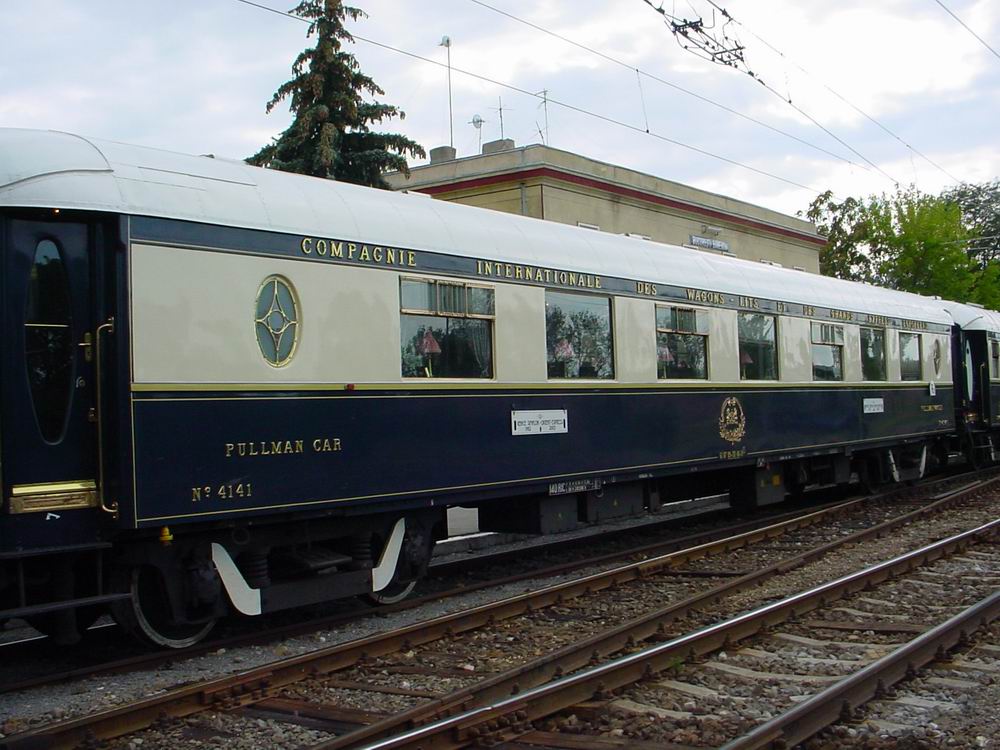Lima - 363 - Passenger Car, CIWL, Pullman - Wabash - 3425
| Stock Number | 363 |
| Brand | Lima |
| Manufacturer | Lima |
| Body Style | Lima Passenger Car CIWL Pullman |
| Prototype Vehicle | Passenger Car, CIWL, Pullman (Details) |
| Road or Company Name | Wabash (Details) |
| Road or Reporting Number | 3425 |
| Paint Color(s) | Silver and Blue |
| Print Color(s) | Black |
| Additional Markings/Slogan | Pullman |
| Coupler Type | Rapido Hook |
| Coupler Mount | Truck-Mount |
| Wheel Type | Nickel-Silver Plated Metal |
| Wheel Profile | Standard |
| DCC Readiness | No |
| Release Date | 1968-01-01 |
| Item Category | Passenger Cars |
| Model Type | Heavyweight |
| Model Subtype | CIWL |
| Model Variety | Pullman |
| Prototype Region | Europe |
| Prototype Era | EU Epoch II (1920 - 1945) |
| Years Produced | 1926 - 1930 |
| Scale | 1/160 |
Specific Item Information:
Introduced in the 1968 catalog - disappeared a couple of years after.
Non prototypical, based on a European coach car.
Non prototypical, based on a European coach car.
Model Information:
Introduced in 1968. Available up until the early 1980's.
Like most of Lima passenger cars, this one of length 138 mm is too short; it should be 146 mm long to be prototypically correct at scale N (1/160).
Like most of Lima passenger cars, this one of length 138 mm is too short; it should be 146 mm long to be prototypically correct at scale N (1/160).
Prototype History:
The CIWL (Compagnie Internationale des Wagons-Lits) Pullman cars are luxury lounge and restaurant cars built in the 1920's by a variety of manufacturers. They have been in service until the early 1970's.
A total of 211 cars were built in 4 series (1st class, otherwise mentioned):
Type « Sud-Express »
- 10 lounge cars (n° 2737 to 2748)
- 3 lounge cars w. kitchen (n° 2839 to 2841)
Type « Flèche d'Or » (Paris-London)
- 15 lounge cars (24 seats) w. kitchen n° 4001 to 4015
- 15 lounge cars (32 seats) n° 4016 to 4030
- 15 other cars (n° 4051 to 4080 w. or w/o kitchen)
- 30 additional cars (n° 4031 to 4050, n° 4081 to 4090)
Type « Étoile du Nord » (Paris - Amsterdam)
- 20 coach cars (38 seats) w. kitchen (n° 4091 à 4110) - 2nd Cl.
- 20 coach cars (51 seats) (n° 4111 à 4130) - 2nd Cl.
Type « Côte d'Azur » (Paris - Vintimille « Train bleu »)
- 34 cars n° 4131 to 4164, of the following 2 types, the most luxurious of the series:
++ lounge cars (20 seats) w. kitchen
++ lounge cars (28 seats)
From Wikipedia (in French)
Full roster of CIWL Pullman cars on this page (in French)
A total of 211 cars were built in 4 series (1st class, otherwise mentioned):
Type « Sud-Express »
- 10 lounge cars (n° 2737 to 2748)
- 3 lounge cars w. kitchen (n° 2839 to 2841)
Type « Flèche d'Or » (Paris-London)
- 15 lounge cars (24 seats) w. kitchen n° 4001 to 4015
- 15 lounge cars (32 seats) n° 4016 to 4030
- 15 other cars (n° 4051 to 4080 w. or w/o kitchen)
- 30 additional cars (n° 4031 to 4050, n° 4081 to 4090)
Type « Étoile du Nord » (Paris - Amsterdam)
- 20 coach cars (38 seats) w. kitchen (n° 4091 à 4110) - 2nd Cl.
- 20 coach cars (51 seats) (n° 4111 à 4130) - 2nd Cl.
Type « Côte d'Azur » (Paris - Vintimille « Train bleu »)
- 34 cars n° 4131 to 4164, of the following 2 types, the most luxurious of the series:
++ lounge cars (20 seats) w. kitchen
++ lounge cars (28 seats)
From Wikipedia (in French)
Full roster of CIWL Pullman cars on this page (in French)
Road Name History:
Wabash was the product of an 1889 restructuring (under the leadership of Jay Gould) of several railroads centered around the Wabash St. Louis & Pacific. Wabash was unusual in that it evenly straddled the border between “eastern railroads” and railroads west of the Chicago-St.Louis-Memphis-New Orleans border. In the west, Wabash connected Kansas City, Omaha and Des Moines. Heading east from those points, Wabash reached St. Louis, Decatur, and Chicago. Then, clearly in the eastern territory, Wabash reached Fort Wayne, Detroit, Toledo and finally Buffalo. Total length was about 2500 miles. The Detroit to Buffalo line cut though southern Ontario, Canada on Canadian National trackage rights. That route also required a car float operation across the Detroit River. As a result, Wabash’s Buffalo traffic was a fraction of that of competitors Nickel Plate and New York Central. However, Wabash’s Detroit-Kansas City and Detroit-St. Louis service was a force to be reckoned with and well patronized by Michigan’s automakers. The Wabash Cannonball was the name of the daytime passenger run between Detroit and St. Louis. The song of the same name was a hit long before it was ever applied to the train itself. Wabash bought control of the Ann Arbor in 1925 and soon after, Wabash and Delaware & Hudson jointly bought control of the Lehigh Valley (Wabash’s principle connection in Buffalo.) This got the attention of the Pennsylvania Railroad who bought control of Wabash under the auspices of their “Pennsylvania Company” subsidiary in 1928.
As PRR planned their merger with New York Central, it became obvious that they could not take Wabash with them. The first step was to transfer control of Ann Arbor from Wabash to Detroit Toledo & Ironton (also in the Pennsylvania Company family.) Up to that point, Ann Arbor was routinely included in the official Wabash system map. Then PRR arranged for Wabash to be included in the Norfolk & Western-Nickel Plate-Pittsburgh & West Virginia merger that was being planned. PRR didn’t overtly control the N&W but they did have considerable influence over them. The deal was made and the new, larger Norfolk & Western leased the Wabash for 50 years in October of 1964. At that point, Wabash became a paper railroad. They were finally merged out of existence by N&W successor Norfolk Southern in the 1990s.
As PRR planned their merger with New York Central, it became obvious that they could not take Wabash with them. The first step was to transfer control of Ann Arbor from Wabash to Detroit Toledo & Ironton (also in the Pennsylvania Company family.) Up to that point, Ann Arbor was routinely included in the official Wabash system map. Then PRR arranged for Wabash to be included in the Norfolk & Western-Nickel Plate-Pittsburgh & West Virginia merger that was being planned. PRR didn’t overtly control the N&W but they did have considerable influence over them. The deal was made and the new, larger Norfolk & Western leased the Wabash for 50 years in October of 1964. At that point, Wabash became a paper railroad. They were finally merged out of existence by N&W successor Norfolk Southern in the 1990s.
Brand/Importer Information:
Lima N scale European models were numbered with 3 digits until 1978. They were renumbered after 1978 by adding "320" before the previous number. e.g. "306" became "320306".
Manufacturer Information:
 Lima S.p.A (Lima Models) was a brand of railway models made in Vicenza, Italy, for almost 50 years, from the early 1950s until the company ceased trading in 2004. Lima was a popular, affordable brand of 00 gauge and N gauge model railway material in the UK, more detailed H0 and N gauge models in France, Germany, Italy, Switzerland, and the United States as well as South Africa, Scandinavia and Australia. Lima also produced a small range of 0 gauge models. Lima partnered with various distributors and manufacturers, selling under brands such as A.H.M., Model Power, Minitrain and PMI (Precision Models of Italy). Market pressures from superior Far Eastern produce in the mid-1990s led to Lima merging with Rivarossi, Arnold, and Jouef. Ultimately, these consolidations failed and operations ceased in 2004.
Lima S.p.A (Lima Models) was a brand of railway models made in Vicenza, Italy, for almost 50 years, from the early 1950s until the company ceased trading in 2004. Lima was a popular, affordable brand of 00 gauge and N gauge model railway material in the UK, more detailed H0 and N gauge models in France, Germany, Italy, Switzerland, and the United States as well as South Africa, Scandinavia and Australia. Lima also produced a small range of 0 gauge models. Lima partnered with various distributors and manufacturers, selling under brands such as A.H.M., Model Power, Minitrain and PMI (Precision Models of Italy). Market pressures from superior Far Eastern produce in the mid-1990s led to Lima merging with Rivarossi, Arnold, and Jouef. Ultimately, these consolidations failed and operations ceased in 2004.
Hornby Railways offered €8 million to acquire Lima's assets (including tooling, inventory, and the various brand names) in March of the same year, the Italian bankruptcy court of Brescia (town near Milan, last headquarters of Lima) approving the offer later that year. In December 2004, Hornby Railways formally announced the acquisition along with the Rivarossi (H0 North American and Italian prototypes), Arnold (N scale European prototypes), Jouef (H0 scale French prototypes), and Pocher (die-cast metal automobile kits) ranges. As of mid-2006, a range of these products has been made available under the Hornby International brand, refitted with NEM couplings and sprung buffers and sockets for DCC (Digital Command Control) decoders.
From Wikipedia

Hornby Railways offered €8 million to acquire Lima's assets (including tooling, inventory, and the various brand names) in March of the same year, the Italian bankruptcy court of Brescia (town near Milan, last headquarters of Lima) approving the offer later that year. In December 2004, Hornby Railways formally announced the acquisition along with the Rivarossi (H0 North American and Italian prototypes), Arnold (N scale European prototypes), Jouef (H0 scale French prototypes), and Pocher (die-cast metal automobile kits) ranges. As of mid-2006, a range of these products has been made available under the Hornby International brand, refitted with NEM couplings and sprung buffers and sockets for DCC (Digital Command Control) decoders.
From Wikipedia
Item created by: Alain LM
on 2020-02-10 15:02:47
Last edited by: Alain LM on 2020-11-01 06:47:57
If you see errors or missing data in this entry, please feel free to log in and edit it. Anyone with a Gmail account can log in instantly.
Last edited by: Alain LM on 2020-11-01 06:47:57
If you see errors or missing data in this entry, please feel free to log in and edit it. Anyone with a Gmail account can log in instantly.



